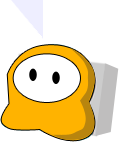Delve into Ogindong
The district Ogindong of in Seoul is a subburb in South Korea a little north-west of Seoul, the country's capital town.
If you need a hotel, we compiled a list of available hotels close to the map centre further down the page.
While being here, you might want to pay a visit to some of the following locations: Seoul, Jangheung, Gwangtan, Gwangjeok and Bupyeong. To further explore this place, just scroll down and browse the available info.
Local weather forecast
Todays Local Weather Conditions & Forecast: 13°C / 56 °F
| Morning Temperature | 8°C / 47 °F |
| Evening Temperature | 15°C / 58 °F |
| Night Temperature | 12°C / 54 °F |
| Chance of rainfall | 0% |
| Air Humidity | 22% |
| Air Pressure | 1030 hPa |
| Wind Speed | Calm with 2 km/h (1 mph) from South |
| Cloud Conditions | Clear sky, covering 0% of sky |
| General Conditions | Sky is clear |
Saturday, 9th of November 2024
15°C (59 °F)
14°C (57 °F)
Sky is clear, calm, clear sky.
Sunday, 10th of November 2024
16°C (61 °F)
15°C (59 °F)
Overcast clouds, light breeze.
Monday, 11th of November 2024
17°C (62 °F)
17°C (62 °F)
Sky is clear, light breeze, clear sky.
Hotels and Places to Stay
RAMADA HOTEL AND SUITES SEOUL
Four Seasons Hotel Seoul
ORAKAI INSADONG SUITES
Golden Tulip M Seoul Hotel
Chiwoonjung Hanok Boutique Hotel
Lotte Hotel Seoul
Grand Hilton Seoul
The Westin Chosun Seoul
Shinshin Hotel Myeongdong
Courtyard Seoul Namdaemun
Videos from this area
These are videos related to the place based on their proximity to this place.
La Plaza de Gwanghwamun (광화문광장)
Plaza de Gwanghwamun en donde se pueden apreciar la estatua del general Yi Sun Sin (이순신) (28 de abril de 1545 - 16 de diciembre de 1598) fue un almirante y general coreano que logró...
vlog 4 Seoul ^_^ PART 1
my SECOND trip to Seoul. much better time this time. beginning with my lovely trip via bus, trans to Itaewon, Namdaemun, Hong Dae, and back to Itaewon during a crazy fun night out.
Seoul from above
http://www.seoulentourage.com If you visit the Seoul Museum of History, try to check Level 3. There's an exhibition called "Seoul, Now and in the Making". You can see the city of Seoul as...
왕돌잠 김희선쉐프(요리사)의 대게코스요리. 3월1일 리빙쇼 당신의6시 방영
3월1일 리빙쇼 당신의 6시에 대게코스요리를 소개하는 동영상입니다. 왕돌잠의 김희선쉐프(요리사)가 대게회, 대게찜, 대게구이, 대게칠리볶음,대게...
PARK, MARKET&JAIL SEODAEMUN SEOUL-KOREA = 西大門・韓国ソウル
2012.05 Seoul Library http://picture.dwi.jp/ http://www.youtube.com/user/jojiwatanabe GH2.
Beethoven 5 Symphony 2nd Mov: Seoul Combined Teachers & Student Orchestra
Performed by the Seoul Combined Teachers and Student Orchestra, which brings together: 1) The Seoul Nambu (Southern Area) Student Orchestra (50 members); and 2) The Seoul School Teachers...
[TRIPofJHL] Climbing Inwangsan Mountain in Seoul, Korea
Video of Inwangsan Mountain climbing locating in Seoul, South Korea. Starting from Inwangsan Jarakgil(lower trail), climbed up the mountain from the east to ...
첫눈 내리고 있는 경복궁
경복궁한복대여 해와달한복 #창덕궁 #해와달한복##경복궁한복대여#서촌#대만 #북촌한옥마을 #한복스타그램 #hanbok#haewadalhanbok #hanbokrental#travel...
Videos provided by Youtube are under the copyright of their owners.
Attractions and noteworthy things
Distances are based on the centre of the city/town and sightseeing location. This list contains brief abstracts about monuments, holiday activities, national parcs, museums, organisations and more from the area as well as interesting facts about the region itself. Where available, you'll find the corresponding homepage. Otherwise the related wikipedia article.
Gyeongbokgung
Gyeongbokgung, also known as Gyeongbokgung Palace or Gyeongbok Palace -- is a royal palace located in northern Seoul, South Korea. First constructed in 1395, later burned and abandoned for almost three centuries, and then reconstructed in 1867, it was the main and largest palace of the Five Grand Palaces built by the Joseon Dynasty. The name means "Palace" [Gung Gung] "Greatly Blessed by Heaven" [Gyeongbok Gyeongbok].
Gyeonghuigung
Gyeonghui Palace was a palace located in Seoul, South Korea. It was one of the "Five Grand Palaces" built by the Joseon Dynasty. In the latter Joseon period, Gyeonghuigung served as the secondary palace for the king, and as it was situated on the west side of Seoul, it was also called Seogwol (a palace of the west). The Secondary palace is usually the palace where the King moves to in times of emergency.
Blue House
The Blue House (Korean: 청와대 Cheong Wa Dae) is the executive office and official residence of the South Korean head of state, the President of the Republic of Korea and located in the capital city of Seoul. The Korean name literally translates to "pavilion of blue tiles. " The Blue House is in fact a complex of buildings, built largely in the traditional Korean architectural style with some modern elements.
Hongje Station
Hongje Station is a rapid transit station on Seoul Subway Line 3.
Dongnimmun Station
Dongnimmun Station is a station on the Seoul Subway Line 3. It is named after the nearby Independence Gate.
Muakjae Station
Muakjae Station is a station on Seoul Subway Line 3.
Seodaemun Station
Seodaemun Station is a station on the Seoul Subway Line 5. It is named after one of the four great gates of the circular wall surrounding ancient Seoul.
Gwanghwamun Station
Gwanghwamun Station is a station on the Seoul Subway Line 5 in South Korea. It is not the closest subway station to the actual gate of Gwanghwamun, for which it is named. It is located next to the U.S. Embassy in Seoul. This station boasts the most traffic of all Line 5 stations.
Seodaemun Prison
Seodaemun Prison History Hall is a museum and former prison in Seodaemun-gu, Seoul, South Korea. It was constructed beginning in 1907. The prison was opened on October 21, 1908, under the name Gyeongseong Gamok. Its name was changed to Seodaemun Prison in 1923. The prison was used during the Colonial period to house anti-colonial activists, and could accommodate around 500 people.
Japanese General Government Building, Seoul
The Government-General Building (1916-26) -- often referred to outside of Korea as the "Seoul Capitol" -- was the chief administrative building in Keijo (Seoul) during Colonial Korea and the seat of the Governor-General of Korea from 1926 until 1946. After independence the neoclassical building was the scene of numerous important events for the Republic of Korea (South Korea), housing first the National Assembly, and later the National Museum of Korea.
Independence Gate
The Independence Gate(독립문;獨立門) is a memorial gate located in Seoul, South Korea. The gate was built following the first Sino-Japanese war to inspire a spirit of independence away from previous Korean arrangement as a Chinese tributary state. design of Seo Jae-pil. The Independence Gate was built to replace the Yeongeunmun Gate(영은문;迎恩門). , which was a symbol of diplomatic relations between Korea and Qing Dynasty. To raise funds for the building, the Independence Club collected contributions.
Yeongeunmun
The Yeongeunmun (literally "welcoming gate for obligation") was a historical gate located in present Hyeonjeo-dong, Seodaemun-gu, in the northwestern part of Seoul, South Korea. It was built in front of Mohwagwan during the Joseon Dynasty where envoys dispatched from Ming and Qing China were received as diplomatic guests.
Gwanghwamun
Gwanghwamun is the main and largest gate of Gyeongbokgung Palace, in Jongno-gu, Seoul, South Korea. It is located at a three-way intersection at the northern end of Sejongno. As a landmark and symbol of Seoul's long history as the capital city during the Joseon Dynasty, the gate has gone through multiple periods of destruction and disrepair. Restoration work on the gate was finished and opened to the public on August 15, 2010.
Gyeongbokgung Station
Gyeongbokgung station is a subway station on the Seoul Subway Line 3. Gyeongbokgung station is the subway station nearest to the Gyeongbok Palace or (Gyeongbokgung). The station is also near the Central Government Complex and the National Police Agency of South Korea. There are other administrative buildings in the neighborhood.
Ilmin Museum of Art
Ilmin Museum of Art is a private art museum of South Korea, located on Sejongno street in Jongno-gu, a central district of Seoul, known for exhibiting mainly Korean art. The museum was established and run by the Ilmin Cultural Foundation, a non-profit organization founded in 1994 in memory of Kim Sang-man, former president of Dong-A Ilbo, one of the major newspaper companies of South Korea. Kim devoted his entire life to developing Korean journalism and promoting Korean culture.
Tibet Museum (South Korea)
The Tibet Museum is a museum dedicated to Tibetan culture in Sogyeok-dong, Jongno-gu, Seoul, South Korea.
Seoul Museum of History
Seoul Museum of History is a history museum located in Sinmunno 1 ga, Jongno-gu, Seoul, South Korea. Seoul was the capital of the Joseon Dynasty, and the Museum depicts the evolution from its prehistoric period to the city it is today. It illustrate the history Seoul and host’s special exhibitions, such as Panoramic Prague.
Whanki Museum
The Whanki Museum is a private art museum located in Jongno-gu, in central Seoul, South Korea. It was established by the Whanki Foundation mainly to exhibit and commemorate the art world of Whanki Kim, a representative abstract painter in Korean art history. The museum was first planned in 1988 in Buam-dong, located close to Seongbuk-dong, Seongbuk-gu, which Kim Whanki had many attachments to. The atmosphere and environment of the two places have much in common.
World Jewellery Museum
The World Jewellery Museum is a museum in Seoul, South Korea.
Third Battle of Seoul
The Third Battle of Seoul, also known as the Chinese New Year's Offensive, the January–Fourth Retreat or the Third Phase Campaign Western Sector (Chinese: 第三次战役西线; pinyin: Dì Sān Cì Zhàn Yì Xī Xiàn), was a battle of the Korean War, which took place from December 31, 1950 to January 7, 1951 around the South Korean capital of Seoul.
Yongsan bombing
The Yongsan bombing by the United States Air Force took place during the North Korean offensive of the Korean War and included a destructive bombing raid in Seoul. About 50 B-29s with the U.S. Fifth Air Force bombed Yongsan, Seoul on 16 July 1950. The B-29s dropped bombs on the switch yard and arsenal behind the Yongsan Station to slow down the North Korean Army advance; however, some of the bombs missed the targets and hit civilian facilities.
College of Engineering, Ewha Womans University
The College of Engineering is one of eleven major academic divisions (or colleges) of the Ewha Womans University. Established in 1996 with four departments, Computer Science, Electronics Engineering, Environmental Science, and Architecture, the college currently offers B.S. , M.S. , and Ph.D. degrees.
Seodaemun Independence Park
Seodaemun Independence Park (서대문독립공원) is an educational and cultural park located in Hyunjeo-dong, Seodaemun-gu, Seoul, South Korea. The park contains various monuments and buildings, most notably the Seodaemun Prison Museum. The park receives nearly half a million visitors annually.
Donuimun
Donuimun (Hangul 돈의문, Hanja 敦義門; also known as West Gate) was one of the Eight Gates of Seoul in the Fortress Wall of Seoul, South Korea, which surrounded the city in the Joseon Dynasty. The gate’s historical location is also known as Seodaemun (서대문, “West Big Gate”).
Changuimun
Changuimun (Hangul 창의문, Hanja 彰義門; also known as Northwest Gate) is one of the Eight Gates of Seoul in the Fortress Wall of Seoul, South Korea, which surrounded the city in the Joseon Dynasty. The gate is also known as Buksosomun (북소문, “North Small Gate”), and Jahamun (자하문).


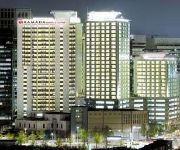

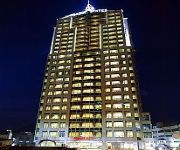
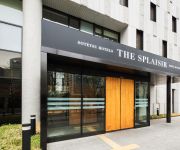

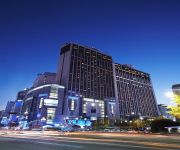
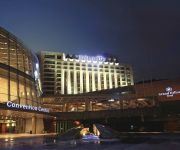
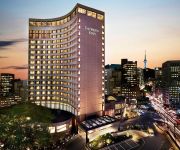
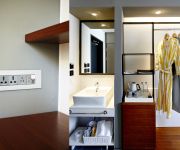










!['[TRIPofJHL] Climbing Inwangsan Mountain in Seoul, Korea' preview picture of video '[TRIPofJHL] Climbing Inwangsan Mountain in Seoul, Korea'](https://img.youtube.com/vi/5eNC-s5rymk/mqdefault.jpg)




